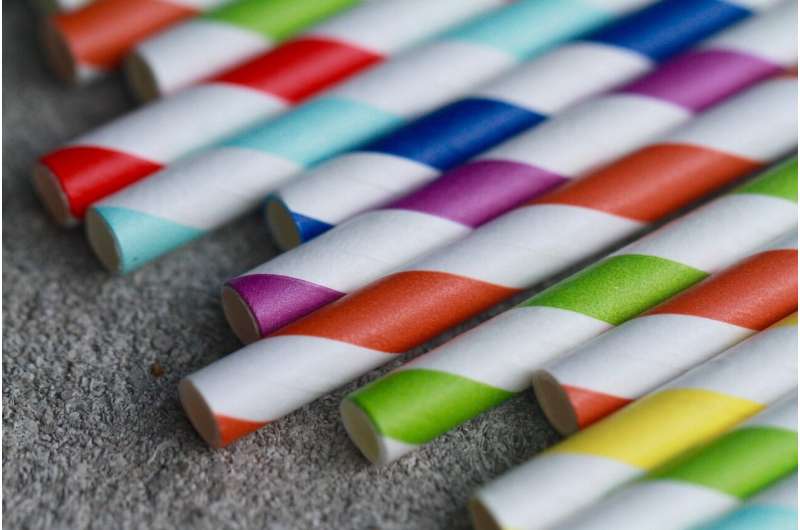This article has been reviewed according to Science X's editorial process and policies. Editors have highlighted the following attributes while ensuring the content's credibility:
fact-checked
peer-reviewed publication
trusted source
proofread
To uncover new fluid flow laws, researchers turn to drinking straws

A team of researchers has uncovered new laws governing the flow of fluids through experiments on a technology thousands of years old: a drinking straw. This knowledge could be useful for improving fluid handling in medical and engineering applications.
"We found that sipping through a straw defies all the previously known laws for the resistance or friction of flow through a pipe or tube," explains Leif Ristroph, an associate professor at New York University's Courant Institute of Mathematical Sciences and an author of the study, which appears in the Journal of Fluid Mechanics. "This motivated us to search for a new law that could work for any type of fluid moving at any rate through a pipe of any size."
Flows of liquids and gasses through pipes, tubes, and ducts occur in many situations in nature and industry—such as with blood flow and in oil pipelines.
"The pipe-flow problem has always been one of the most basic and important in the study of fluid mechanics, and in many ways the field was developed to address this problem," explains Ristroph, director of NYU's Applied Mathematics Laboratory, where the research was conducted.
However, in their work, Ristroph and his colleagues found that all known laws relating pressure and flow rate were accurate only under certain conditions.
To reach this conclusion, they conducted a series of experiments—measurements of flow rate and pressure for metallic pipes of different lengths and diameters using several types of liquid. The goal was to determine how these factors relate to the frictional resistance of the flow going through the pipe.
"Our data showed that the famous and classical laws for flow friction are only accurate for some combinations of flow speeds and pipe sizes," explains Ristroph. "We mapped out the conditions when the existing laws don't work well, and we found a good example right under our noses: drinking through a straw."
Drinking straws are thought to have been used as far back as 5,500 years ago in the early Mesopotamian civilization of Sumeria. But the hydrodynamics of their operation was not previously studied.
The researchers expanded their study to include several kinds of straws—a thin coffee stirrer type, a regular soda type, and a wide bubble tea type—and they performed experiments to determine the friction for flow rates that are typical during drinking.
The data on straws and similarly sized pipes did not match any of the known laws, which are named for their discoverers, the scientists Evangelista Torricelli and Jean Léonard Marie Poiseuille, among others.
The researchers found that each classical law failed because it assumes that the pipe is either very short or very long, and that the flow is either very slow or very fast. The in-between cases, including straws, involve complicated factors such as how the flow changes along the length of the pipe and whether it becomes smooth and laminar or rough and turbulent.
Modeling such effects allowed the team to derive a single mathematical formula, and its predictions matched the experimental measurements for all pipes and straws and for all fluids and flow speeds that were tested.
"A universal formula could be very useful, for example, in understanding and modeling blood flow in the circulatory system," Ristroph observes. "Our veins, arteries, and capillaries are basically pipes with many different diameters, lengths, and flow rates."
More information: Olivia Pomerenk et al, Hydrodynamics of finite-length pipes at intermediate Reynolds numbers, Journal of Fluid Mechanics (2023). DOI: 10.1017/jfm.2023.99
Journal information: Journal of Fluid Mechanics
Provided by New York University





















